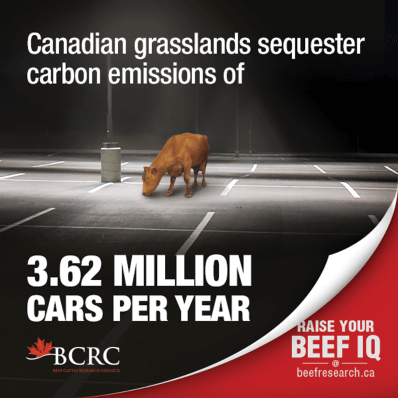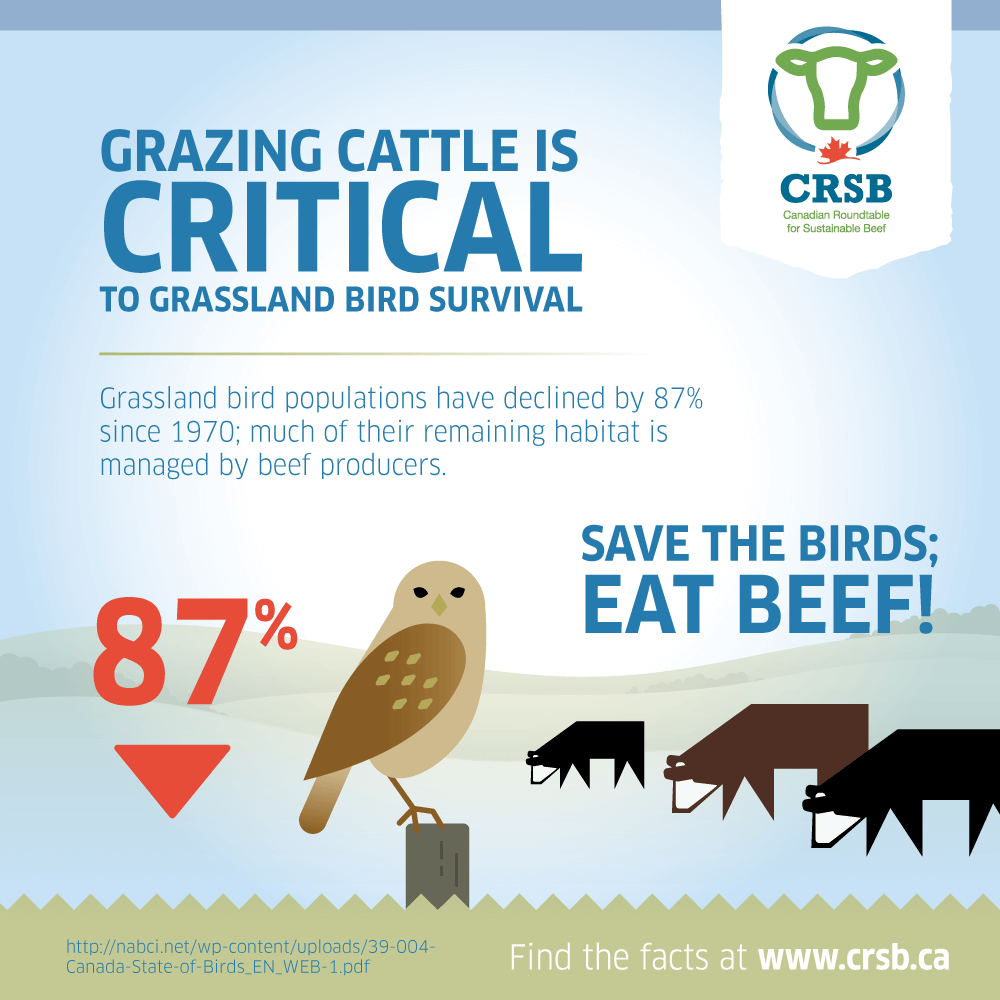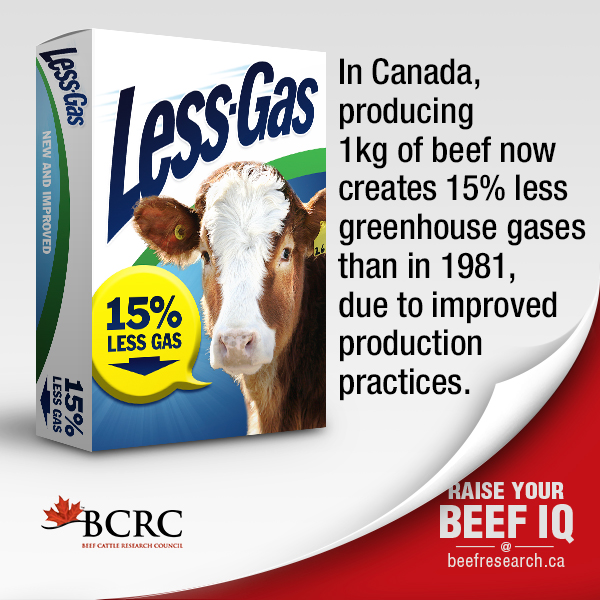Environment & Climate Change
Cattle farmers and ranchers are long-time partners with the environment and manage their land to ensure sustainable and viable operations for the long-term. Farmers and ranchers use management practices that protect the health of their animals and the environment by protecting water sources, grassland ecosystems, soil health, and working towards the maintenance of a sustainable agro-ecosystem. Modern production practices produce more beef from fewer animals which maximizes resources like land and water while providing essential nutrients for the human diet.
The efficiency and environmental footprint of beef production in Canada have improved significantly in the last 30 years. Researchers at the University of Manitoba and Agriculture and Agri-Food Canada (AAFC) Lethbridge found that producing each unit of Canadian beef:
Beef cattle are often raised on land that is unsuitable for producing grain or vegetable crops, eating grasses that people can’t digest. Cattle utilize the land not suitable for producing grain or other crops, and because they are ruminant animals, are able to digest grass that humans can’t and turn it into high quality, nutritious protein source, while at the same time preserving natural ecosystems, enhancing plant biodiversity and wildlife habitat, protecting watersheds, reducing soil erosion and sequestering carbon. Cattle production is an effective and efficient way to provide a nutrient-dense protein by converting non-human quality forage/crop products into meat products.


In 2019, the benefits of well-managed grazing were acknowledged in the State of Canada’s Birds report. The national report examined the human influence on Canada’s bird populations since the 1970s, and the negatives and positives driving the trend. The report recognized cattle grazing as a positive practice that can help to preserve habitat for birds. The report said the inclusion of bison, beef, and other range-fed meat in the human diet encourages the retention of pastureland.
Modern production practices maintain and improve environmental integrity of grassland ecosystems to sustain working landscapes, conserve biodiversity, and promote vibrant rural communities.
Environmental stewardship is compatible with or inherent in modern beef cattle production practices. Rangelands and pasture play a huge role in maintaining plant biodiversity, wildlife habitats, watersheds, and reducing soil erosion and greenhouse gases (GHG). Rangelands and tame pastures remove carbon dioxide from the atmosphere. Canada’s world-class efficiencies in cattle production continue to decrease the carbon footprint of our beef.

Canadian cattle farmers and ranchers care about the environment and the land they work on and provide many ecosystem benefits. Using management practices that protect the health of the animal and the environment go a long way towards the maintenance of a sustainable agro-ecosystem.
Payment for Ecological Services (PES) Programs
Several common misconceptions surround Payment for Ecological Service (PES) Programs. This document tries to clarify some of these frequently asked questions while using tangible examples from existing programs. Download the PDF document explaining PES.
Learn more about the Canadian Roundtable for Sustainable Beef’s projects.


